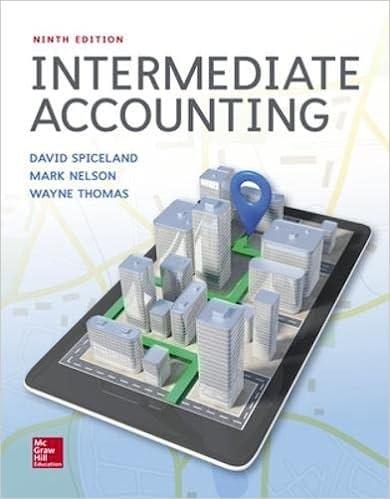Inverness Steel Corporation is a producer of flat-rolled carbon, stainless and electrical steels, and tubular products. The
Question:
Sales .......................................................... $6,255
Cost of goods sold ......................................... 5,190
The company's balance sheets for 2018 and 2017 included the following information ($ in millions):
____________________________________ 2018 _____________2017
Current assets:
Accounts receivable, net ..................... $703 .................. $583
Inventories ..................................... 880 .................. 808
The statement of cash flows reported bad debt expense for 2018 of $8 million. The summary of significant accounting policies included the following notes ($ in millions):
Accounts Receivable (in part)
The allowance for uncollectible accounts was $10 and $7 at December 31, 2018 and 2017, respectively. All sales are on credit.
Inventories
Inventories are valued at the lower of cost or market. The cost of the majority of inventories is measured using the last in, first out (LIFO) method. Other inventories are measured principally at average cost and consist mostly of foreign inventories and certain raw materials. If the entire inventory had been valued on an average cost basis, inventory would have been higher by $480 and $350 at the end of 2018 and 2017, respectively. During 2018, 2017, and 2016, liquidation of LIFO layers generated income of $6, $7, and $25, respectively.
Required:
Using the information provided:
1. Determine the amount of accounts receivable Inverness wrote off during 2018.
2. Calculate the amount of cash collected from customers during 2018.
3. Calculate what cost of goods sold would have been for 2018 if the company had used average cost to value its entire inventory.
4. Calculate the following ratios for 2018:
a. Receivables turnover ratio
b. Inventory turnover ratio
c. Gross profit ratio
5. Explain briefly what caused the income generated by the liquidation of LIFO layers. Assuming an income tax rate of 35%, what was the effect of the liquidation of LIFO layers on cost of goods sold in 2018?
Inventory Turnover Ratio
Inventory Turnover RatioThe inventory turnover ratio is a ratio of cost of goods sold to its average inventory. It is measured in times with respect to the cost of goods sold in a year normally. Inventory Turnover Ratio FormulaWhere,... Accounts Receivable
Accounts receivables are debts owed to your company, usually from sales on credit. Accounts receivable is business asset, the sum of the money owed to you by customers who haven’t paid.The standard procedure in business-to-business sales is that... Corporation
A Corporation is a legal form of business that is separate from its owner. In other words, a corporation is a business or organization formed by a group of people, and its right and liabilities separate from those of the individuals involved. It may... Liquidation
Liquidation in finance and economics is the process of bringing a business to an end and distributing its assets to claimants. It is an event that usually occurs when a company is insolvent, meaning it cannot pay its obligations when they are due....
Fantastic news! We've Found the answer you've been seeking!
Step by Step Answer:
Related Book For 

Intermediate Accounting
ISBN: 9781259722660
9th Edition
Authors: J. David Spiceland, James Sepe, Mark Nelson, Wayne Thomas
Question Posted:





